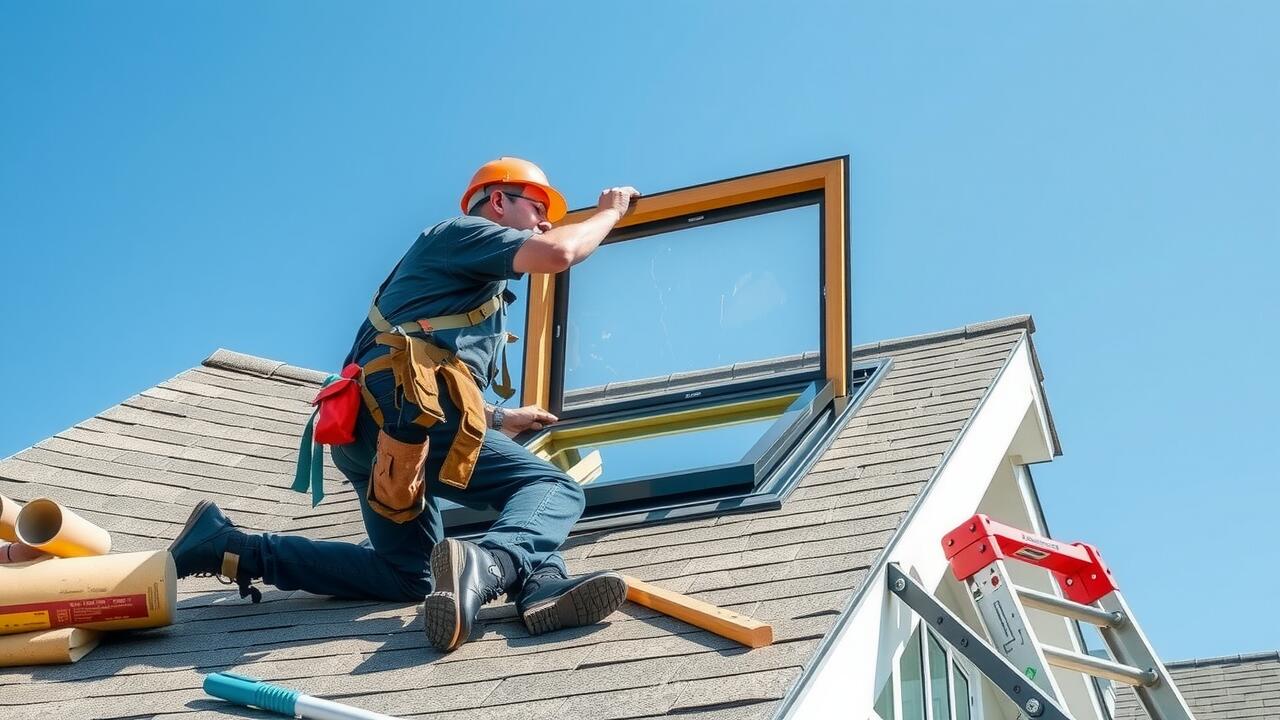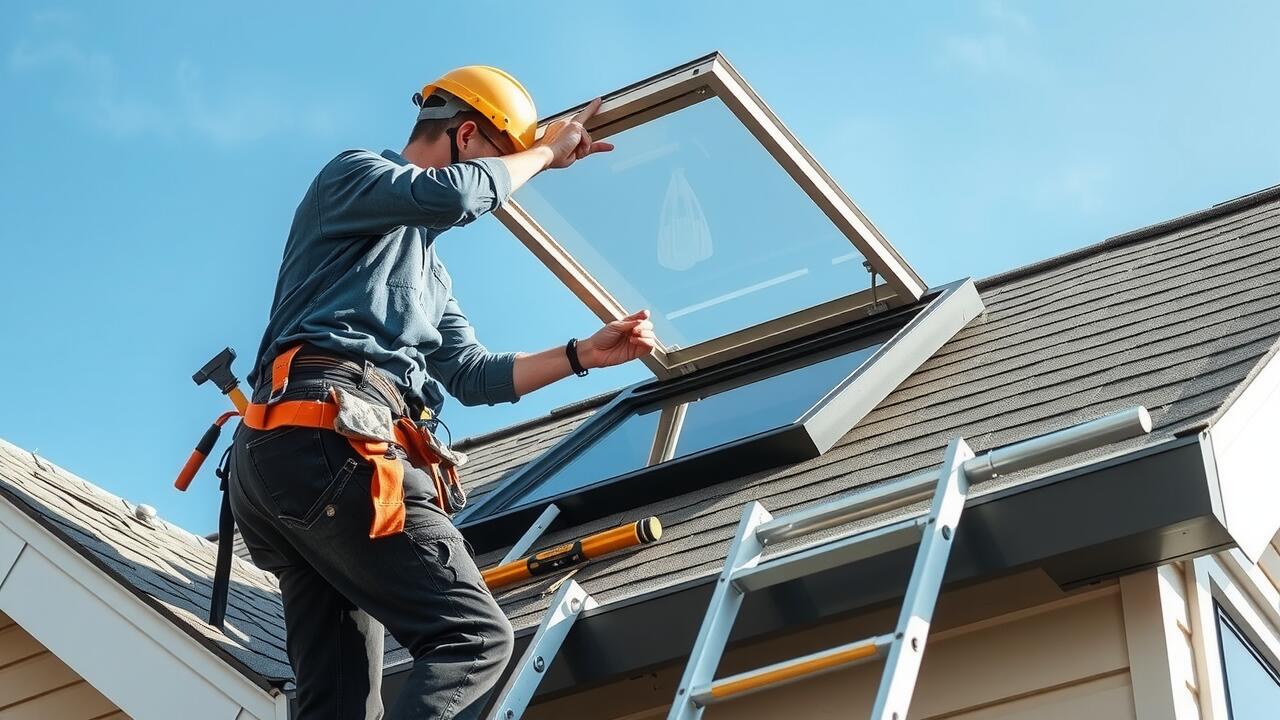
Energy Efficiency and Long-Term Savings
Skylight installation can significantly improve a home’s energy efficiency. Natural light reduces the need for artificial lighting during the day, which can lead to lower electricity bills. By strategically placing skylights, homeowners can enhance ventilation, allowing warm air to escape while drawing in cooler air, especially during the summer months. This creates a more comfortable indoor environment without relying heavily on heating or cooling systems.
In addition to immediate energy savings, skylight installation can contribute to long-term financial benefits. Properties with natural lighting tend to be more appealing to potential buyers, which can increase resale value. Furthermore, homeowners may benefit from energy efficiency rebates or incentives provided by local governments or utility companies, making the initial investment in skylights more economical over time.
The Impact of Skylights on Energy Bills
Skylight installation can significantly influence energy bills by enhancing natural lighting within a home. During daylight hours, the introduction of skylights reduces reliance on artificial lighting. This natural illumination can lead to lower electricity consumption, especially in spaces that previously depended heavily on electric lights. Furthermore, the strategic placement of skylights can also improve ventilation, reducing the need for air conditioning during warmer months, which contributes to overall energy savings.
The energy efficiency of skylights is further enhanced by modern glazing technologies. Many skylights now feature low-emissivity coatings and double or triple glazing, which help to mitigate heat loss during the winter months. This technology not only keeps homes warmer but also reduces heating costs in colder Canadian climates. Thus, investing in skylight installation is not just about improving aesthetics; it can also provide measurable financial benefits through lower energy bills over time.
DIY vs. Professional Installation
Choosing between DIY and professional installation for skylight installation hinges on skill level and experience. Those who are handy with tools and have a basic understanding of roofing may find satisfaction in taking on the project themselves. This approach can save on labour costs but requires careful planning and consideration of safety measures. Proper installation is critical to prevent leaks and ensure energy efficiency, making thorough research essential for any DIY enthusiast.
On the other hand, hiring professionals for skylight installation often guarantees a higher quality outcome. Experts bring experience, knowledge, and efficiency to the process, which can significantly reduce the time required for completion. While this option typically incurs higher upfront costs, it may be beneficial in the long run as it minimizes the risk of costly repairs stemming from improper installation. Additionally, many professionals offer warranties, adding peace of mind to the investment.
Cost Implications of Each Approach
Choosing between DIY skylight installation and hiring a professional can significantly influence your overall expenses. A DIY approach typically requires purchasing all necessary materials and tools, which can add up. While this method may save on labour costs, the risk of miscalculations or improper installation can lead to more expenses down the line, such as repairs or even structural damage.
On the other hand, professional skylight installation comes with its own set of costs. While the initial investment might be higher due to labour charges, experienced contractors often ensure a proper fit and finish, decreasing the likelihood of future issues. This can translate to greater long-term savings on energy bills and maintenance. Weighing these financial implications carefully can help determine the most cost-effective route for your skylight project.
Hidden Costs to Consider
When planning for skylight installation, it’s essential to account for hidden costs that may arise during the project. These expenses can include necessary structural modifications to ensure the skylight is properly integrated into your home. If your roof type requires additional framing reinforcement or if there is existing damage that needs addressing, these costs can add up quickly, impacting your overall budget significantly.
Maintenance should also be a consideration when budgeting for skylight installation. Skylights can be prone to leaks if not installed correctly or if seals degrade over time. Regular inspections and potential repairs could be needed to avoid water damage or air leaks, which can result in higher utility bills. Account for these long-term expenses to maintain optimal performance and protect your investment.
Potential Repair and Maintenance Expenses
When considering skylight installation, potential repair and maintenance expenses should not be overlooked. Skylights can be prone to leaks, especially if not installed correctly. Regular inspections are essential to catch any issues early. Weather elements such as heavy rain or snow can exacerbate these problems, leading to costly repairs down the line. Homeowners should factor in these ongoing maintenance costs as part of their overall budgeting for skylight installation.
Additionally, the materials chosen for skylight installation play a crucial role in long-term upkeep. For instance, glass skylights may require cleaning more often than acrylic options, which can scratch more easily. The frames and seals used in the installation can wear out, necessitating replacements. As a result, it’s wise to consider the long-term durability of materials and schedule regular maintenance checks to ensure the skylight remains in good condition.
FAQS
What is the average cost to install a skylight in Canada?
The average cost to install a skylight in Canada typically ranges from $1,000 to $3,000, depending on the type of skylight, the complexity of the installation, and any additional features.
Are there energy savings associated with installing a skylight?
Yes, skylights can enhance energy efficiency by allowing natural light to illuminate your home, potentially reducing electricity costs. They can also improve ventilation, which may lower heating and cooling expenses over time.
Can I install a skylight myself to save money?
While DIY installation may save on labour costs, it requires a certain level of skill and experience. Mistakes during installation can lead to leaks and additional expenses, so it’s often recommended to hire a professional for best results.
What hidden costs should I be aware of when installing a skylight?
Hidden costs can include structural modifications, potential roofing repairs, and ongoing maintenance. Additionally, if you require permits or inspections, those fees should also be factored into your budget.
What maintenance is required for skylights?
Skylights typically require regular cleaning and inspection for leaks or damage. Depending on the materials used, occasional sealing or repairs may also be necessary to maintain energy efficiency and functionality.
